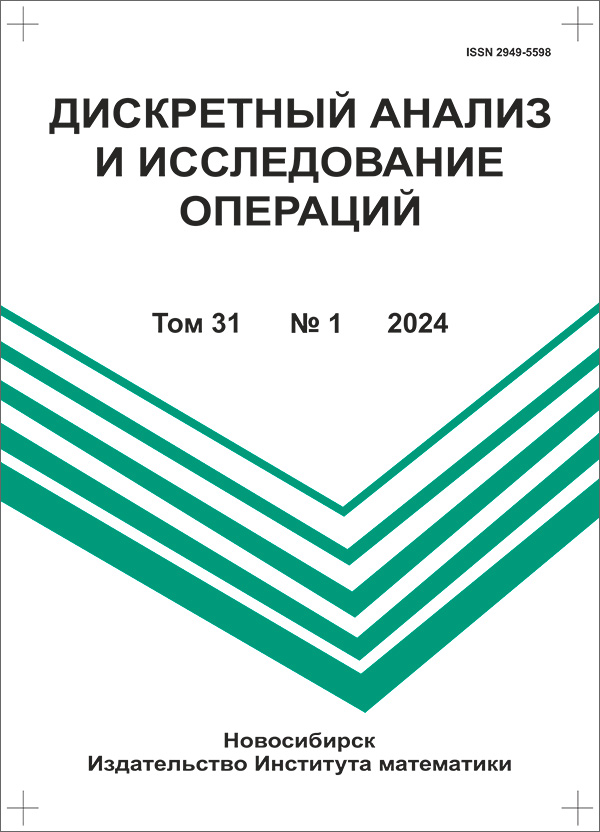|
This article is cited in 2 scientific papers (total in 2 papers)
A graph-theoretical method for decoding some group MLD-codes
V. M. Deundyakab, E. A. Lelyuka
a Vorovich Institute of Mathematics, Mechanics, and Computer Science, 8a Milchakov Street, 344058 Rostov-on-Don, Russia
b Scientific and Research Institute “Spetsvuzavtomatika”, 51 Gazetnyi Lane, 344002 Rostov-on-Don, Russia
Abstract:
We construct the class of majority-logical decodable group codes using a method for combining the codes that are based on the tensor product and the sum of codes. The construction of this class rests on the Kasami–Lin technique, which allows us to consider not only individual codes but also families of codes and utilizes the $M$-orthogonality construction presented by Massey that is important for the majority-logical decodable codes. The codes under study are ideals in group algebras over, generally speaking, noncommutative finite groups. Some algorithmic model of the majority decoding for the codes under consideration is developed that is based on the graph-theoretic approach. An important part of this model is the construction of a special decoding graph for decoding one coordinate of a noisy codeword corresponding to this graph. The group properties of the codes enable us to quickly find decoding graphs for the remaining coordinates. We develop some decoding algorithm that corrects the errors in all coordinates of the noisy codeword using this decoding graphs. As an example of families of group codes, we give the Reed–Muller binary codes important in cryptography. The code cryptosystems are considered as an alternative to the number-theoretic cryptosystems widely used at present since they are resistant to attacks by quantum computers. The relevance of the problem under consideration lies in the fact that the use of group codes and their various combinations is currently one of the promising ways to increase the stability of code cryptosystems because enables us to construct new codes with a complex algebraic structure, which positively affects the stability of the code cryptosystems. Illustr. 2, bibliogr. 18.
Keywords:
MLD-code, majority decoding, group code, tensor product, graph.
Received: 24.02.2019
Revised: 17.10.2019
Accepted: 27.11.2019
Citation:
V. M. Deundyak, E. A. Lelyuk, “A graph-theoretical method for decoding some group MLD-codes”, Diskretn. Anal. Issled. Oper., 27:2 (2020), 17–42; J. Appl. Industr. Math., 14:2 (2020), 265–280
Linking options:
https://www.mathnet.ru/eng/da949 https://www.mathnet.ru/eng/da/v27/i2/p17
|

| Statistics & downloads: |
| Abstract page: | 309 | | Full-text PDF : | 92 | | References: | 46 | | First page: | 4 |
|




 Contact us:
Contact us: Terms of Use
Terms of Use
 Registration to the website
Registration to the website Logotypes
Logotypes








 Citation in format
Citation in format 
